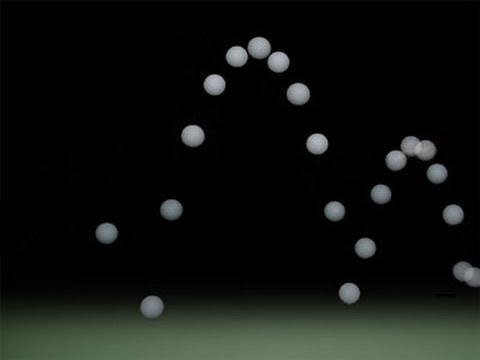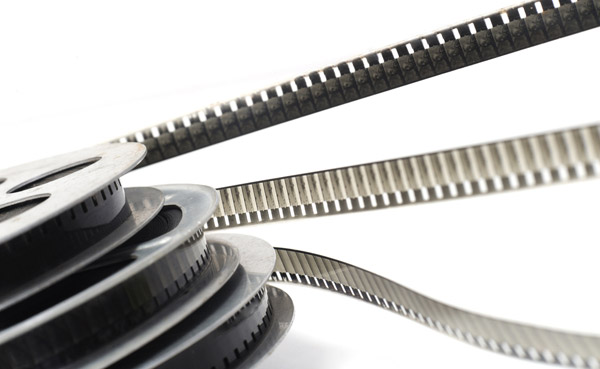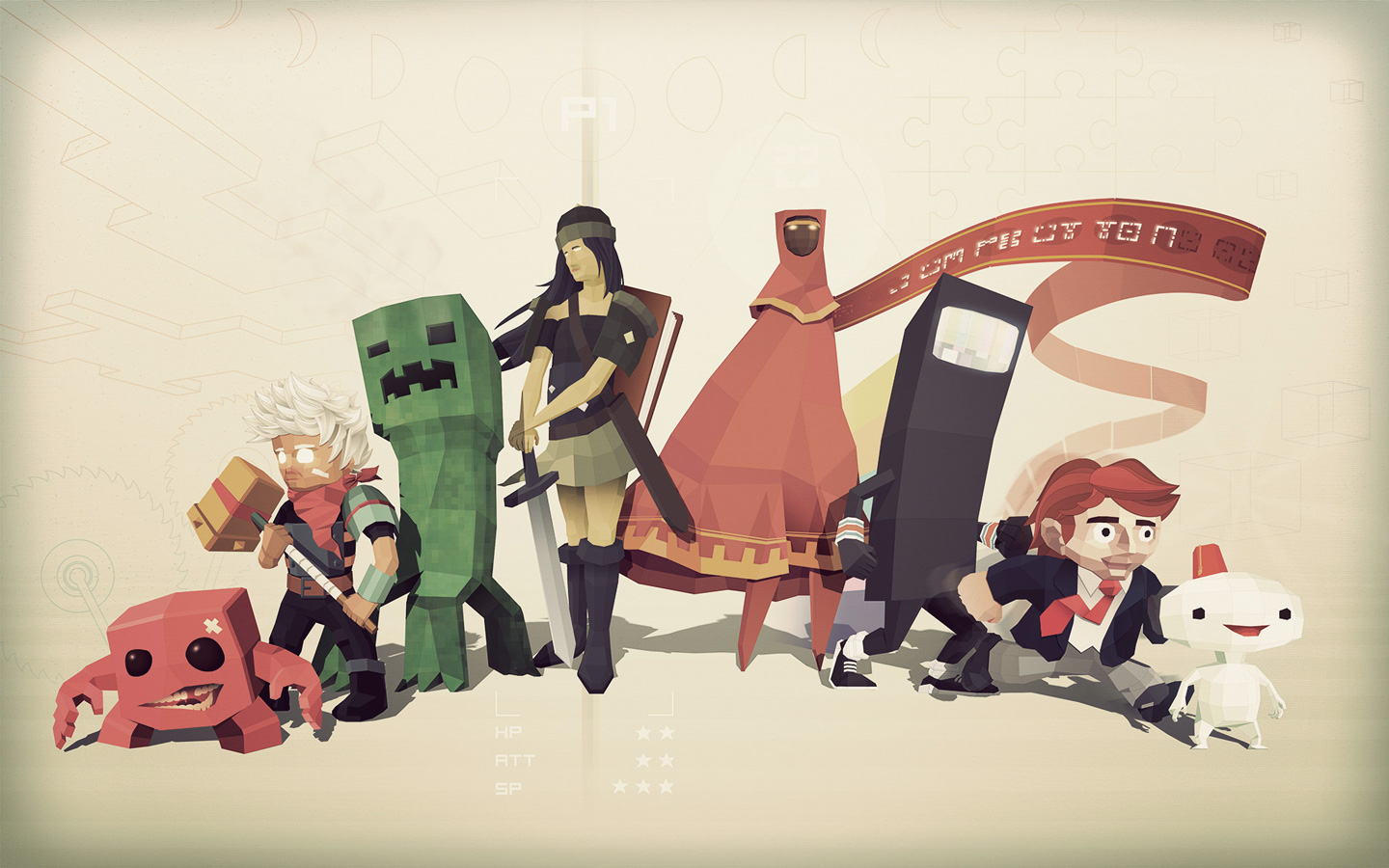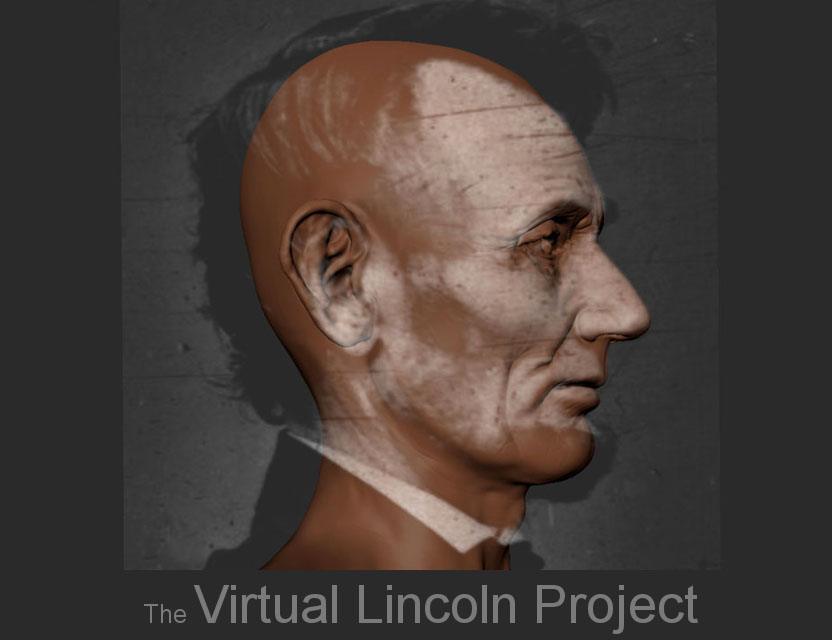Special Effects Tutorials
VFX SFX PFX CGI Foley Compositing
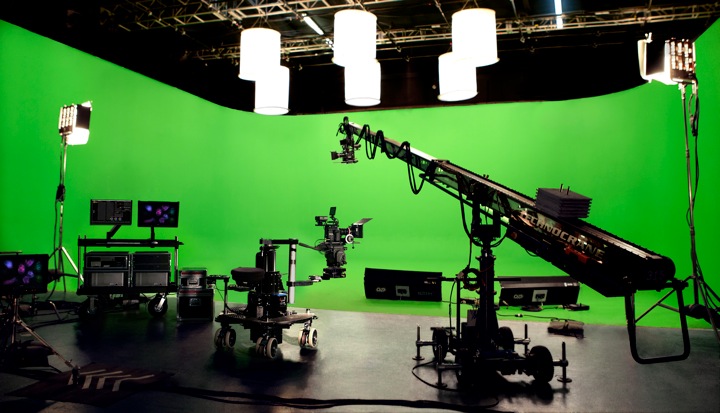
Green Screen/Chromakey
The most important thing about using green screens is getting the lighting just right. Subjects should be 6 to 10 feet away from the screen to avoid cast shadows. Make sure the green screen is lit evenly to avoid hotspots or shadows. The lighting in the source image should match the source of lighting in the replaced background. A blue screen works better with blonde hair or subjects covered in green. Try out multi-layer keying and mattes if the filter leaves an undesirable green edge around the subject. Garbage mattes can be used to block out extra information.
To remove the background in post-production, use the Keylight plugin in After Effects.
VideoFort: Advanced Green Screen Tutorial
Movie Scenes green screen counterparts
FilmmakerIQ: History of Faking it- The Evolution of Greenscreen Compositing
GamesRadar: Movies without the special effects

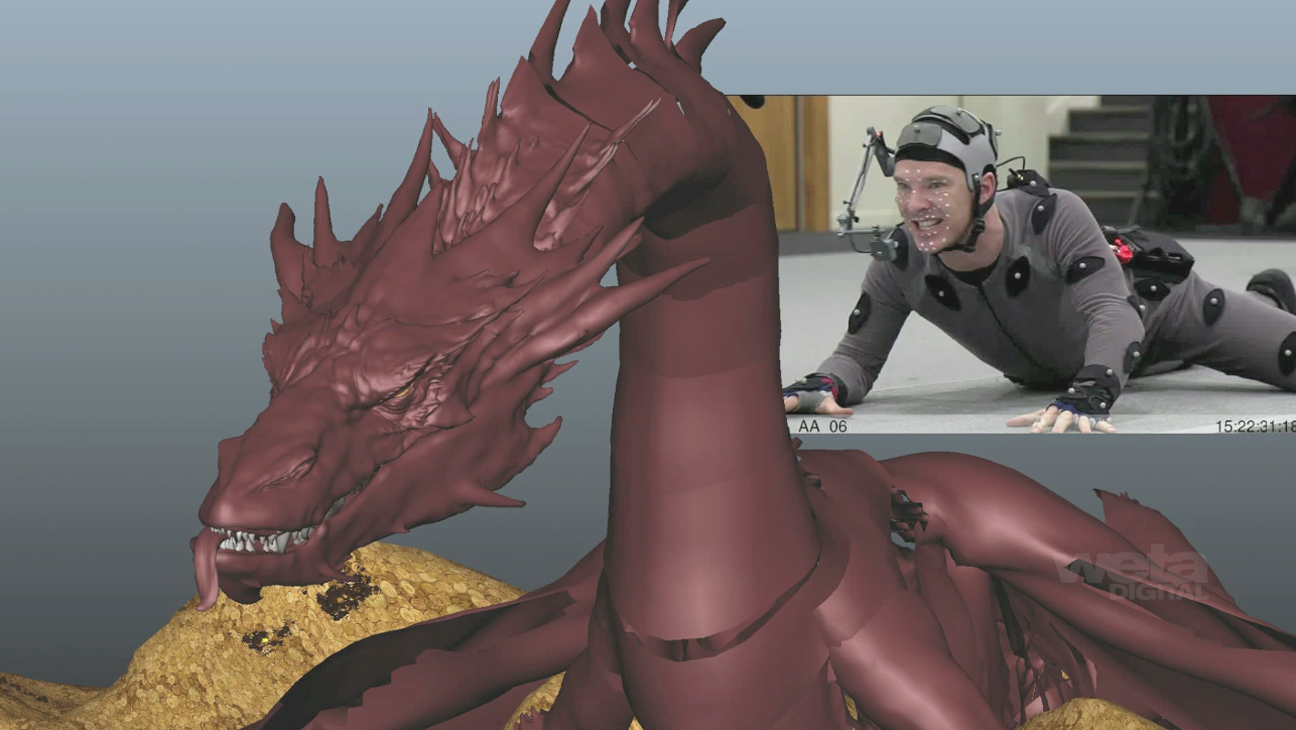
Motion Capture
It takes a truly dedicated actor to perform while dressed up in a skintight leotard covered in ping pong balls. The two main types of motion capture are facial performance capture and full body motion capture. Cameras and sensors track the dots, which are then plugged into a computer program. Animators are able to use the dots attached to the actors to correlate with rigging points set up on a rigged 3D model. Some software programs can apply the actors motion to the model in real time, which signinficantly decreases the amount of work to animate.
Some actors do not like motion capture, since it is perceived as covering up the acting with CGI to the point where the live performance is not seen on screen. There is also controversy caused by the lack of Academy recognition for voice actors and performance capture actors, since the post-work of animators causes the trade to categorized under special effects. Proponents of motion traking hope that as the technology continues to advance, more subtle nuances in expressions can be tracked, and more of the actor's performance will show through the digital makeup.
Realtime Performance Capture: Hellblade
Avatar facial performance capture technology
Weta Digital: VFX of Dawn of the Planet of the Apes
Interview with Ahmed Best

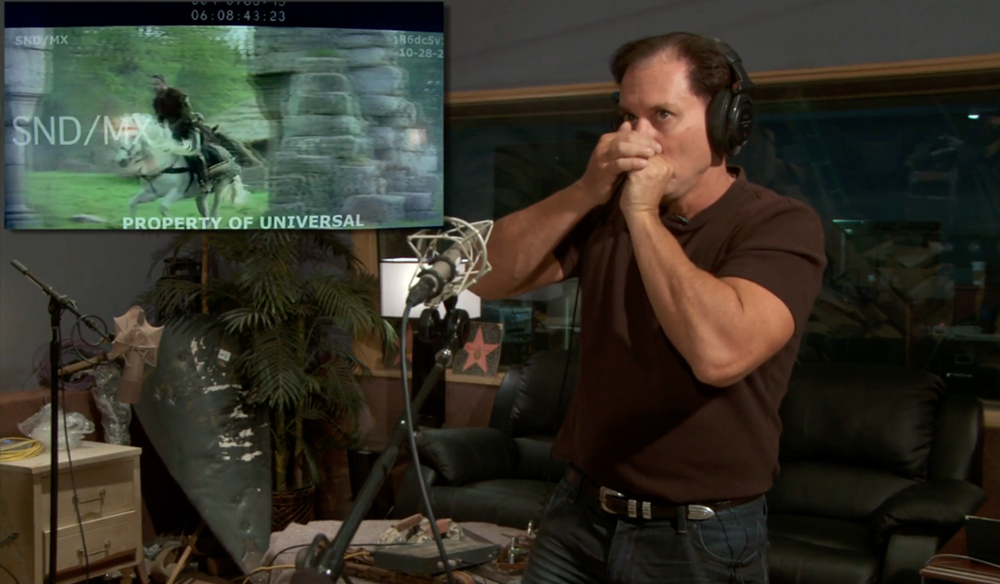
Foleys
Foleys are the industry term for artificiially created sound effects recorded in a sound studio. Foley artists recreate the background noise for every single shot in a movie. Footsteps, doors closing, rain, wind, etc. Foley artists use a wide variety of common objects to recreate sounds. The sound of a horse running might be recreated using coconut halves and a shallow pit filled with gravel. An alien exploding could be a watermelon getting smashed with a baseball bat.
Wired: Foley Art- Where the Sounds From the World's Favorite Movies Are Born
Batman: Arkham City Behind-the-Scenes
Mental Floss: The Wilhelm Scream
Ben Burtt
Cami Alys
Gary Hecker

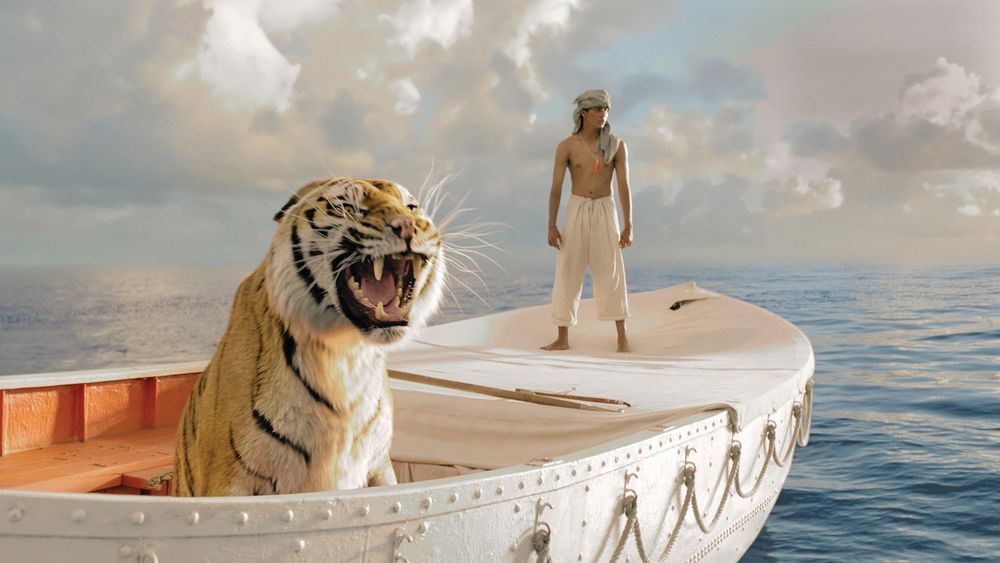
Compositing
Compositing is one of the final steps in post-production that brings together all the elements that will be seen in the final cut. Due to an increase in effects-heavy movies and the tendency for studios to hire less assistant compositors than needed, the crunch of deadlines tends to be fall heavily on the post-production staff. As a result, post-production crews have had to adapt and become familiar with a number of film disciplines and rendering software. A compositor is typically responsible for removing green screen backgrounds, editing, ADR, and adding multiple mattes, lighting layers, and color correction filters.
No Film School: VFX Post Work
Behind the scenes of The Avengers
Behind the scenes of The Avengers: Part 2
ILM: Hal Hickel, Pirates of the Caribbean III
Walt Disney: The MultiPlane Camera

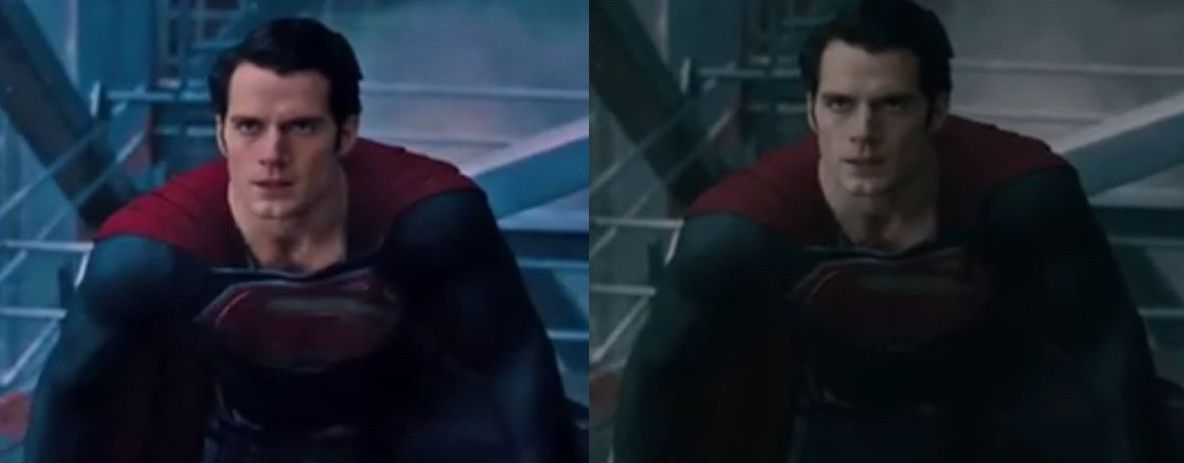
Color Grading
Color grading differs from color correction, which is intended to fix basic over/under exposure. Color grading is a stylistic choice. Color grading works kind of like a lens filter, except all of the effects are done in post-production. Color levels, saturation, temperature, contrast, white balance, and other settings can be adjusted to achieve the desired look.
Film Noir set the standard for atmospheric mood by emphasizing high contrast shadows and lighting. Color grading attempts to recreate that moody presence on screen. Dark movies have a lot of desaturated greys and muddy brown colors to appear gritty. A lighthearted movie would use highly saturated colors.
There has been criticism that color grading is a heavy-handed means of conveying the tone of a story to the audience, and that it would be better to have good acting and plots. There are times when color filters make the lighting in a scene more dramatic, but when applied to an entire feature length movie it tends to have the adverse effect. People can sometimes spot when footage has been edited with digital overlays, especially the overused blue and orange palette. This will cause people to pay more attention to why the sky always seems so overcast rather than focusing on the character interactions. The best special effects are said to be the ones that go unnoticed by the audience.
FX Guide: A graphic tale: the visual effects of Mad Max: Fury Road
The Verge: How filmmakers manipulate our emotions using color
Priceonomics: Why Every Movie Looks Sort of Orange and Blue
DSLR Guide: The Art of Color Grading
ZY Productions: How to Color Grade Video Footage

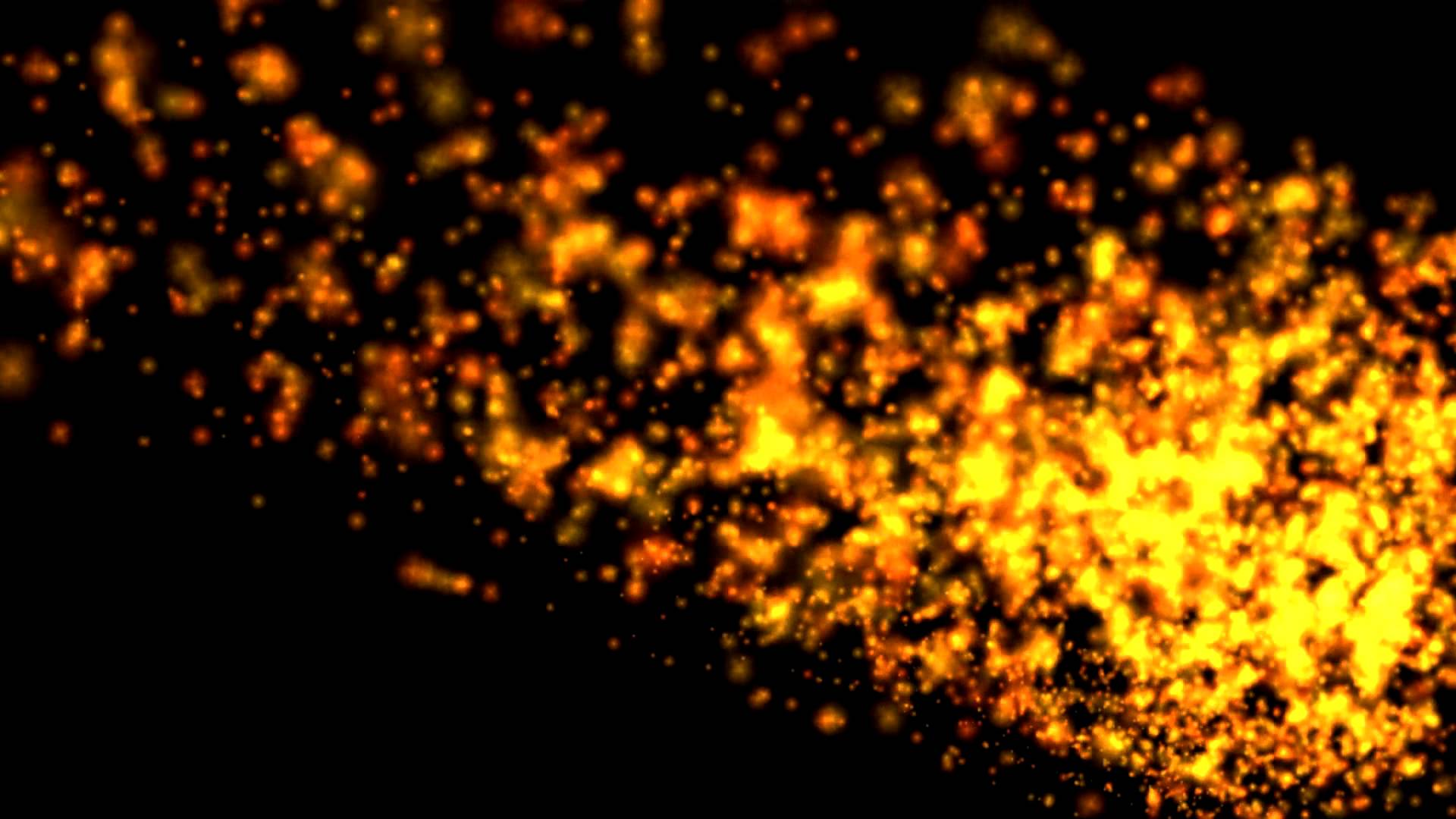
Particle Effects and Fluid Dynamics
Flames, water, explosions, dust, and light are difficult for animators and 3D modelers to simulate digitally, so there are tools that will automatically generate these effects using mathematical algorithms. Control settings allow the animator to manipulate speed, size, number of particles, and path of motion. These effects take up a lot of computing power and render extremely slowly without a powerful render farm.

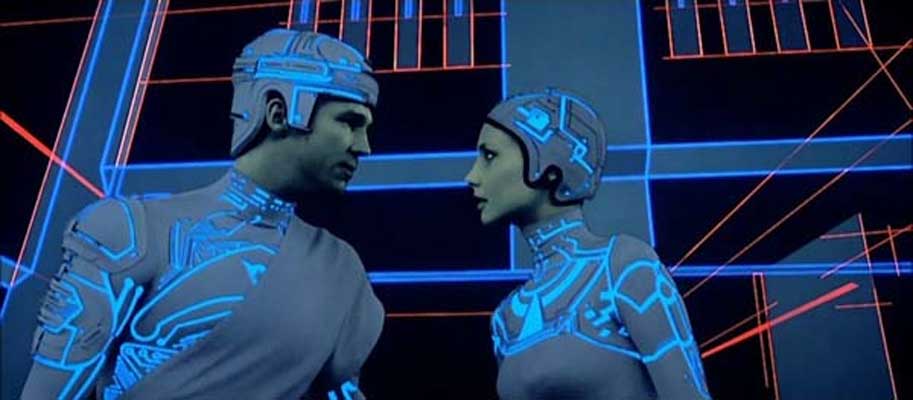
Rotoscoping
Rotoscoping is an animation technique that involves hand painting over live action footage, one frame at a time. It was used to create the glowing lightsaber effect before digital technology. Sometimes compositors will still have to do a little corrective rotoscoping to get rid of edge artifacts.
AWN: A Scanner Darkly- An Animated Illusion
Forbidden Planet, Id Monster Scene

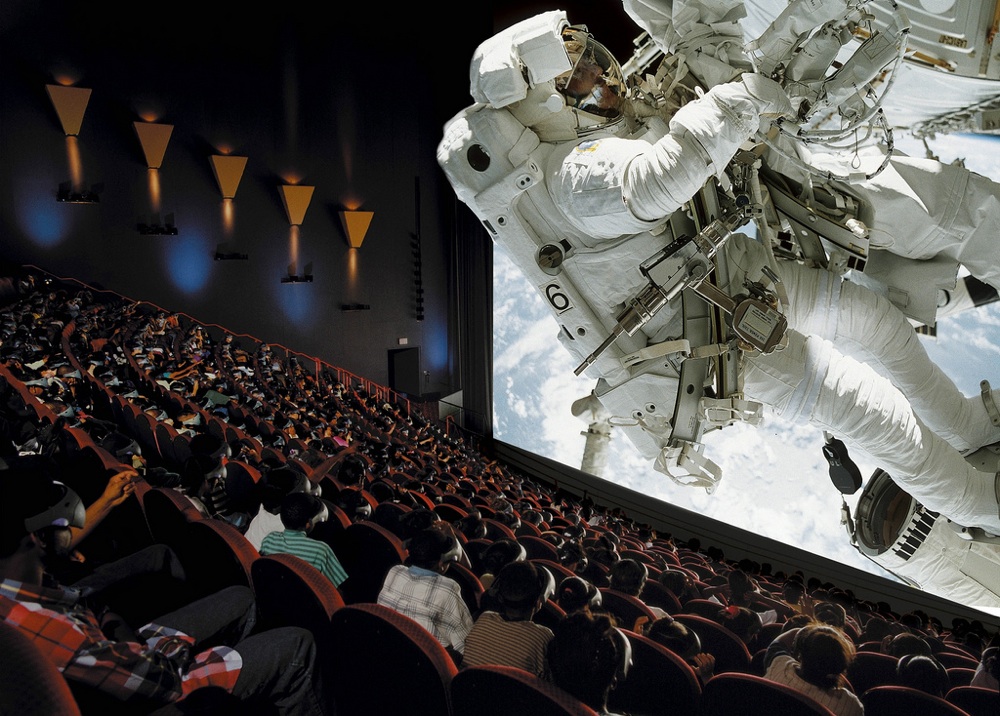
IMAX, 3D, HD, and Stereoscopic Filming
As immersion and Virtual Reality become more commonplace forms of media, it is likely that the way things are filmed will change as well. Luckily, the tools to create 3D effects in film already exist, and much of the process is automated by special types of cameras. The basic principle behind creating the illusion of a 3D image is stereoscopic vision, where two sensors/eyes placed at different points capture two different angle shots of an object, and then piece the shots together into one 3D image.
PC Mag: 'The Hobbit' at 48fps: Frame Rates Explained
Cnet: Why 3D movies are a waste of money
Fansided: Why 3D movies suck and will soon hopefully become extinct

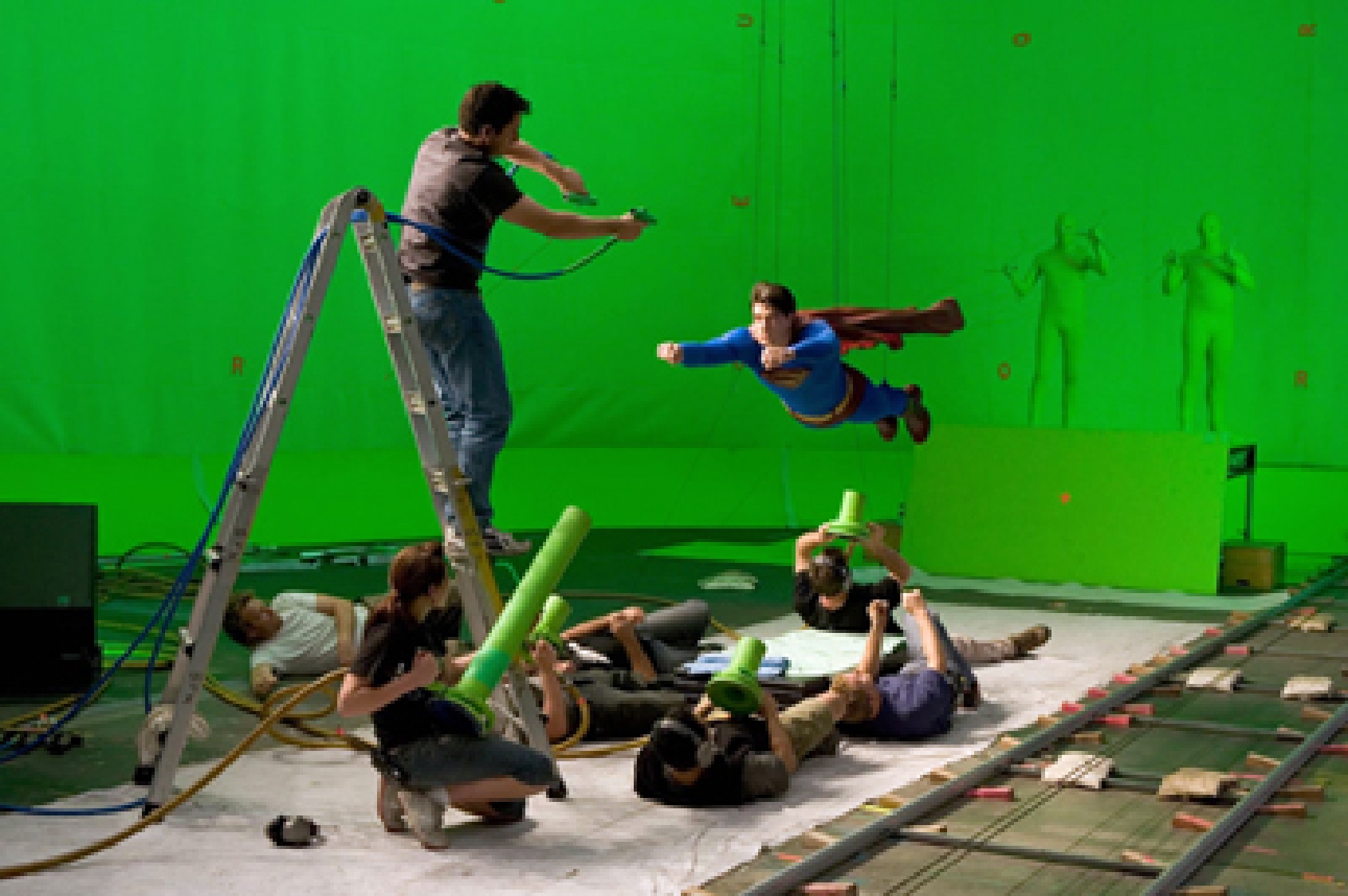
Stunts
There are still plenty of dangerous real stunts, but CGI wizardry has made it a little bit safer to pull off tricks today. It is fairly easy to edit out safety wires or to make leaps over 1,000 foot chasms look a lot more dangerous than the actual two foot jump off a painted green ledge onto a giant cushioned mattress. An actor's face can be composited onto the body of a stunt double. Explosions are generally never anywhere near actors, since they just add all that stuff in during post-production.
One consequence of digital effects is that it has caused audiences to judge effects with higher scrutiny. Physical stunts are still preferred by audiences because people don't feel any tension when a CGI car makes an impossible jump or an actor fights unrealistic CGI monsters that pose no real threat. The challenge for designers is merging in the CGI seamlessly so that audiences either don't know it is there or else are so drawn into the action they don't think about it. It is easier for background artists to get away with this than special effects artists, since the audience's attention is naturally drawn to the primary action, and the human eye is very good at detecting when CGI is out of place.
Holywood Reporter: How "Crazy" Was That Tom Cruise 'Mission: Impossible' Plane Stunt? The Movie's Cinematographer Tells All
Business Insider: Christopher Nolan Most Proud of 'The Dark Knight Rises' Opening Scene
BoredPanda: Actors With Their Body Doubles

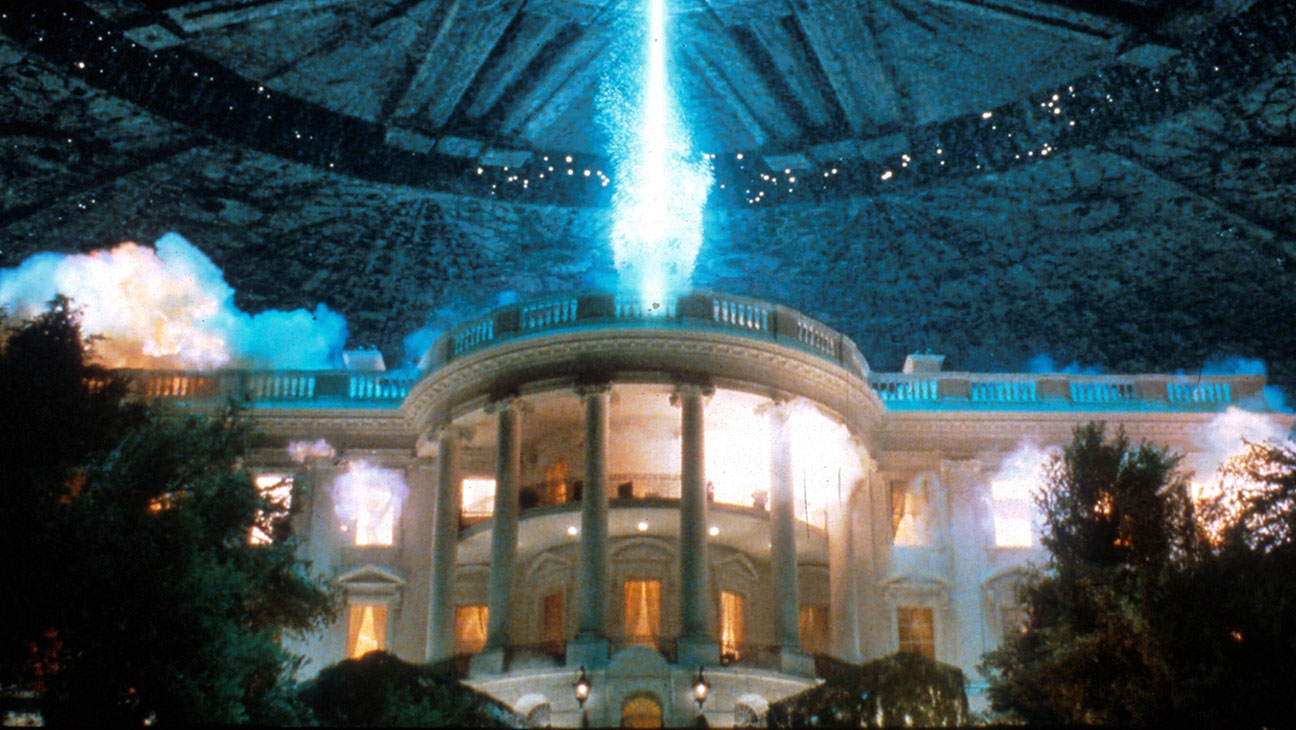
Exploding Stuff
Many explosions and destruction scenes are recreated with lots of CGI, but some directors still prefer the old fashioned method of blowing stuff up. Needless to say, aspiring directors should not attempt creating their own backyard pyrotechnics display without first consulting a demolition expert and following proper safety precautions.
MythBusters: Top 25 Moments - Explosion Montage
ProjectMotion: How To Create Realistic Explosions With Cinema 4D

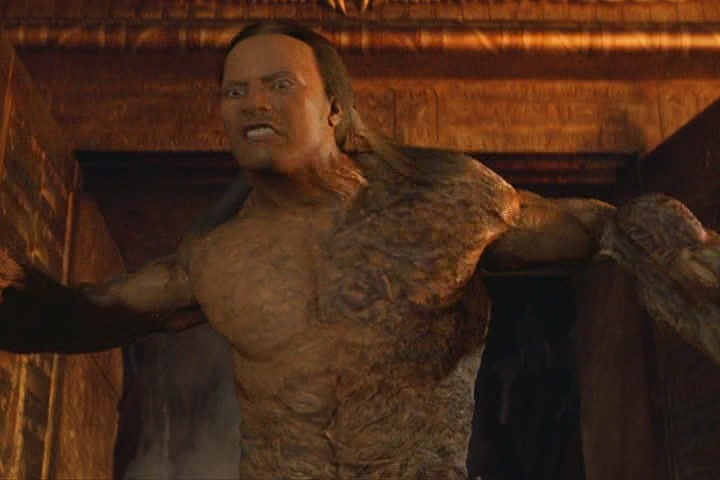
The Uncanny Valley
The uncanny valley refers to attempts to animate or model a human face that looks realistic, but due to slight discrepancies ends up looking just plain creepy. The eyes and mouth are generally where things go wrong. Waxy slack skin also stands out as not quite right. Unnatural robotic movements, delayed reactions, or stiffness in facial muscles are traits to avoid.
The best way to avoid making an animated character look like an evil mannequin that would try to murder you in your sleep is to exaggerate features so they are not exactly proportional to human anatomy. Pixar artists have avoided adding details to skin textures on their human characters for years, since they know adding pores and realistic hair follicles would make the 3D cartoon style far less appealing. Ironically, video game studios have taken the exact opposite approach. Graphics and motion capture have come a long ways, but human game characters still encounter a barrier when it comes to total believability. There are definitely moments where you can suspend disbelief and forget the character isn't real, but then they do the awkward dead stare thing directly at the camera and the moment's gone.
Stranger Dimensions: 10 Creepy Examples of the Uncanny Valley

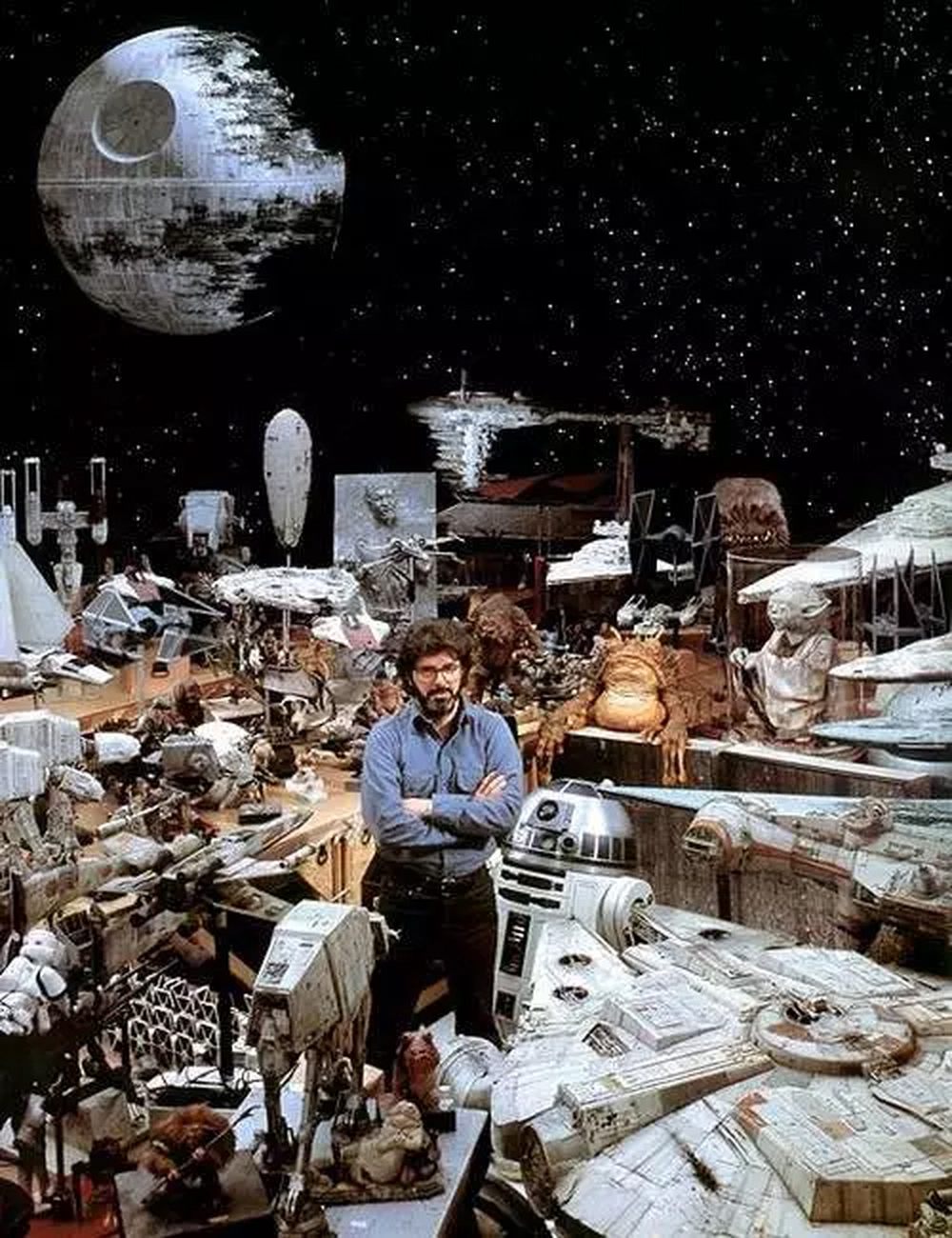
Props
Studios always make multiple props. That way, shooting doesn't have to stop if an important part gets damaged or lost, since the prop department can just bring out a backup. There are different classes of props. Regular props are just average items that can be used in action scenes. They tend to be made from cheaper materials. The Hero is a unique prop model with extra detail work. It is used in close up shots. Hero props are also used frequently with green screens when an actor needs to interact with a physical prop instead of a digital model.
It is common to distress props makes them look dirty or aged. Worn props look like they have a history, which adds more character than something shiny and brand new.
George Ledo: Antiquing and distressing a prop
Props Breakdown Techniques
Weathering Techniques for Cosplay Costumes

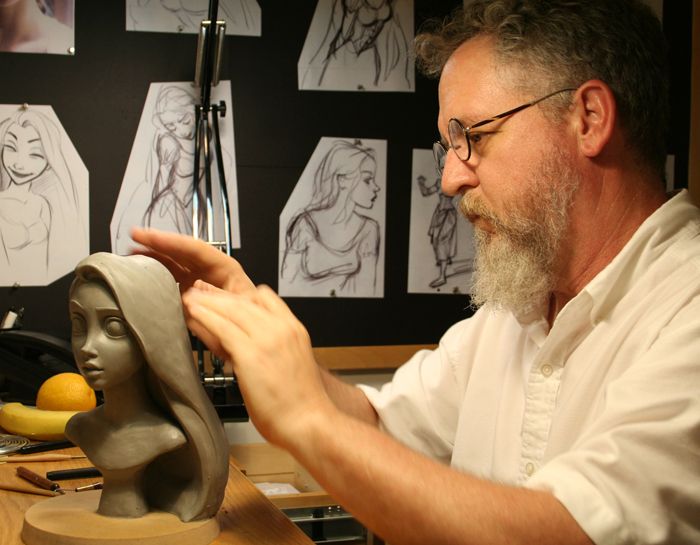
Maquettes (Sculpture)
Clay maquettes provide a 3D reference for animators and the VFX team to work with. Most maquettes are produced after initial concept drawings have been made and before the 3D modeling stage. This allows the director to see if the 2D drawing translates well into 3D, and if not changes can be made to the design.
Maquettes are generally only made for a few key characters or very complicated models, although some higher budget productions will treat maquettes as concept art. High detail maquettes can be scanned into a computer for digital artists to use. 3D printing maquettes for artist reference is not uncommon. Some maquettes are created as scale models to test before building a larger model.
Stan Winston School: Avatar Behind the Scenes

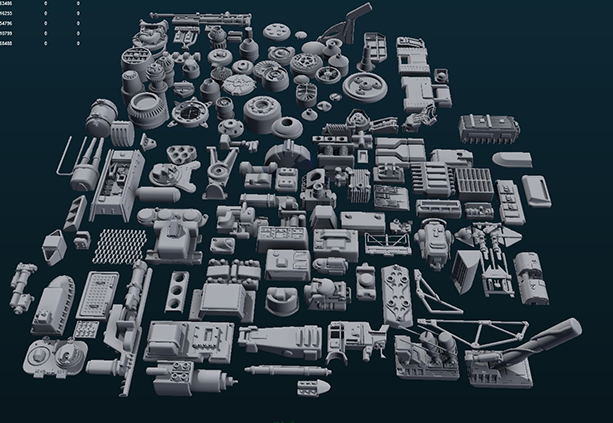
Kitbashing
A trick used by model makers to create lots of detail without actually having to sculpt it all by hand. Kitbashing involves going to a toy store, buying a bunch of different plastic model kits, and then gluing all those parts together. Kitbashing tends to work best with mechanical vehicles, spaceships, vehicles, environments, or buildings. 3D printed parts can be combined with kitbashed components. Today, digital artists can use similar modular 3D assets to help add fine details wthout tons of extra work.
Den of Geek: Greebles

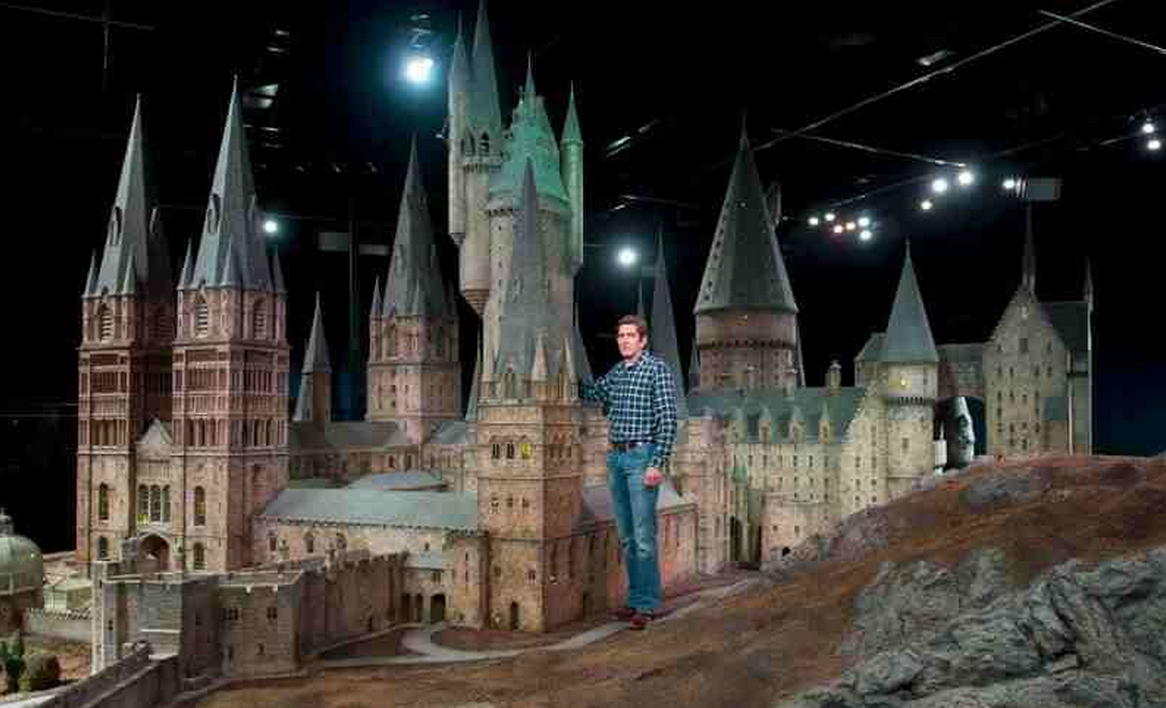
Maquettes and Miniatures
Maquettes/miniatures are scale models used for long distance shots. Miniatures trick the audience into thinking they are seeing the full sized version from far away. A bigature is a large scale model that has far greater detail than a miniature model. Bigatures are typically only used for structures that will get a lot of screen time and be seen from multiple camera angles. Scale model making is getting phased out as many studios and directors choose to hire digital VFX studios to create CGI models instead. Hobby builders and 3D printing are keeping the art alive and offer some hope that miniatures will return to cinema.
The Beat: Cinematography Tip: Creating the Illusion of Scale
SPACEDOCK: Restoration of the Original Star Trek Enterprise Model
LOTR Bigatures

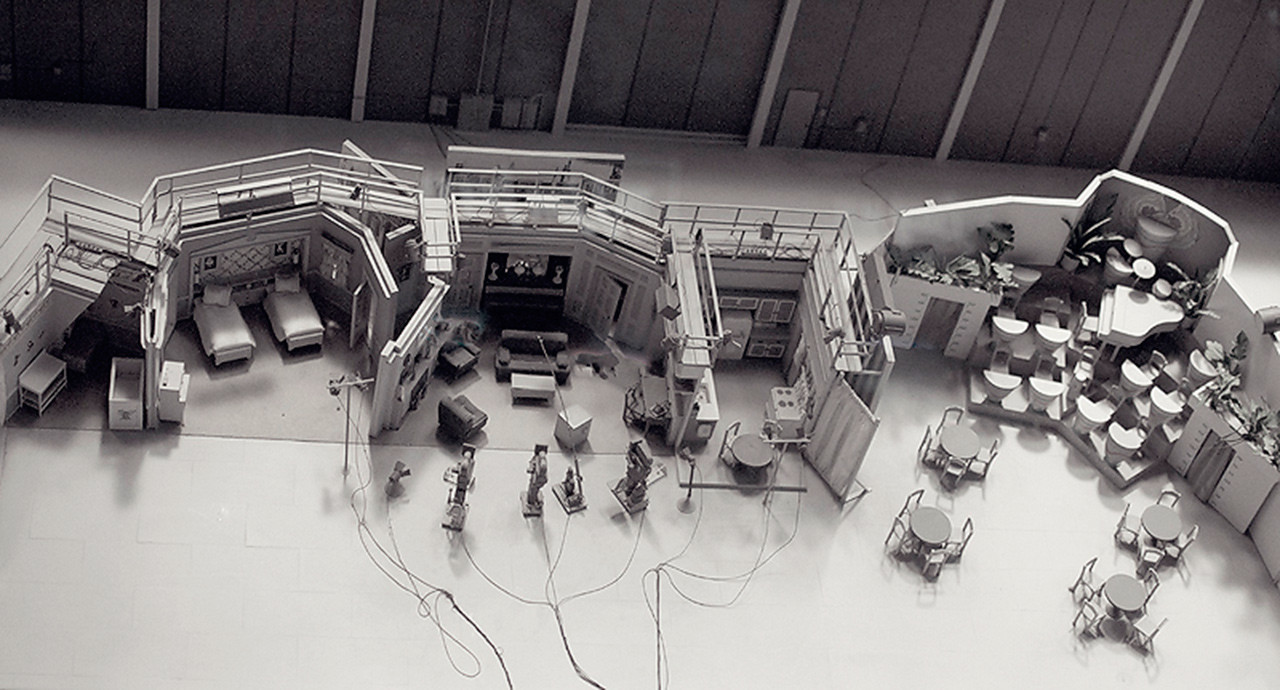
Backlots and Soundstages
It’s expensive to move an entire production crew and equipment to exotic locations around the world. The majority of things seen on television or the big screen are not actual locations, but sets recreated on a studio lot or soundstage. A soundstage is basically a giant warehouse that has sound-proof walls. Normally, multiple scenes are constructed side by side in the soundstage. After filming all the necessary shots for that scene, the sets will be torn down and replaced with the next few scenes. Some serialized television studios might have longer lifespans and more permanent setups.
Today studios try to cut costs whenever possible, so the general practice is to only create partial sets with lots of green screens filling in backgrounds. It is not uncommon to send a small film crew to film different locations around the world, and just composite the actors on the studio set into the footage later on. Many actors dislike working with green screens since it is less immersive than filming on location. Even ocean scenes get filmed on sets in giant tanks of water.
Eldestandonly: Production Design in BLADE RUNNER (1982)
Esquire: The Man who built Star Wars- Set decorator Roger Christian

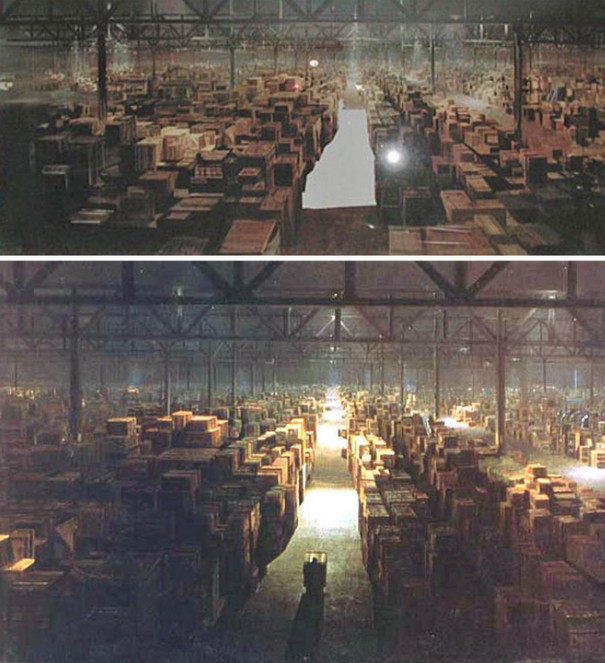
Matte Painting
Matte Painting was a method used to paint very convincing backdrops on glass. Clear sections were left open so that when the matte was converted into filmstrip, live action footage could be seamlessly projected onto the clear sections. Digital painting is now the preferred medium.
Gizmodo: How the Original Star Wars Trilogy Fooled Everyone With Matte Paintings

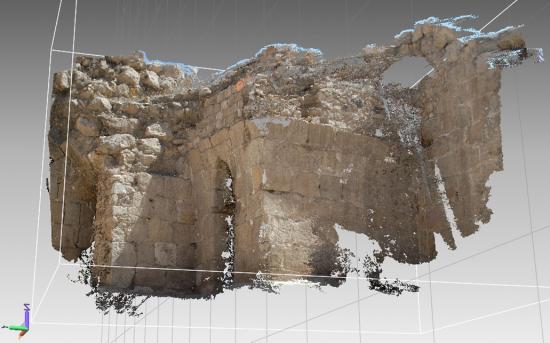
Photogrammetry
Photogrammetry is a technique used to measure the distance between two points on a photograph. The measurements can be used to convert landscapes and architecture into hyper-realistic digital environments
Tested: How To Make Your Own Giant Papercraft Head

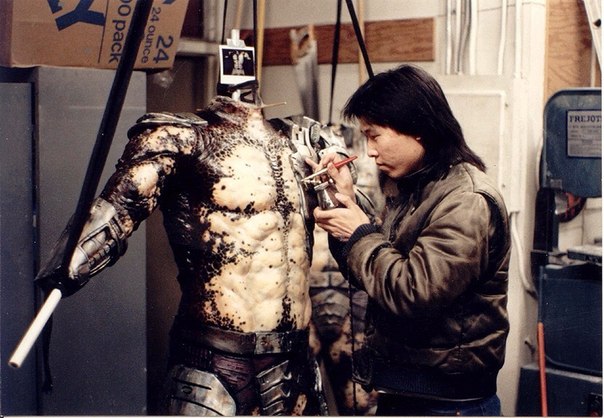
Airbrushing and Drybrushing
Airbrushing and drybrushing can be used for a lot of applications. Tattoos, photo touchups, SFX makeup, cosplay, murals, detail work on miniatures, background art, adding a flaming Balrog to your motorcycle, etc. Unlike digital painting, airbrushing isn't very forgiving of mistakes. Pigments have to be mixed into a watery paint that will spray evenly on surfaces. Airbrush artists will build up a lot of layers to achieve the best look.
Steve Wang: advice to people wanting a job in the special fx industry

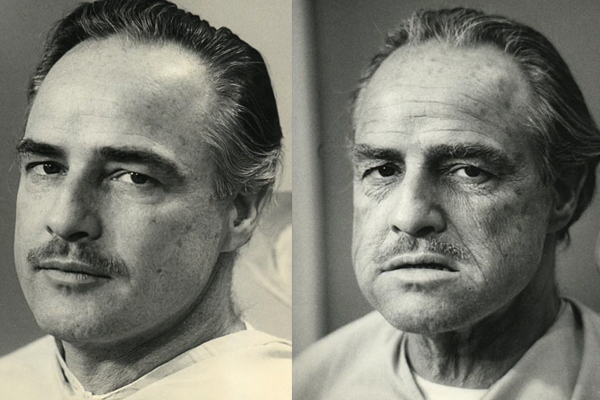
Makeup and Costume
Makeup crews and costume departments spend a lot of hours perfecting what they do and making sure actors look good in front of a camera. An important thing to keep in mind when designing a costume is the actor's comfort. Heavy costumes can get very hot and uncomfortable, especially full body suits and masks. Ventilation and coolant systems are things that should be integrated into the costume and water bottles are usually kept on set for breaks between shooting. Actors don't tend to like full body makeup or silicone/latex prosthetics that can impede facial expressions. Applying makeup can be a grueling process for both the actor and make-up artist. Any makeup that takes over 8 hours to apply will be absolutely miserable for the actor involved.
An American Werewolf in London - Making of the Werewolf - FX Rick Baker
Strange Shapes: Interview with Bolaji Badejo, 1979
io9/Gizmodo: X-Men Prosthetics
Make-Up Artist Magazine: Hellboy 2: The Golden Army 4 Hour Makeup Process
Variety Artisans: Greg Nicotero and 'The Walking Dead'
Syfy: Face Off
imgur: 88 Behind the scenes photos from the Lord of the Rings

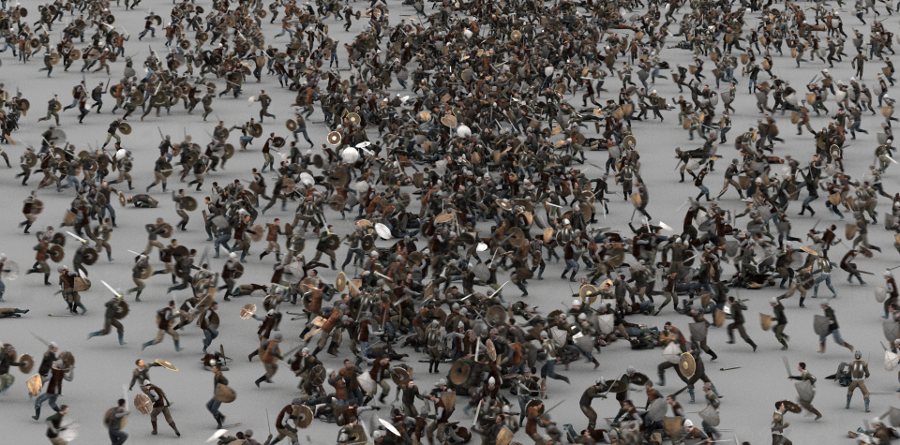
Crowds
Most productions prefer to use digital crowds rather than cast thousands of extras. Creating large crowds typically involves copying and pasting live footage of multiple takes of small groups to be composited together in one scene. The disadvantage of using digital crowds is that they take forever to render, are limited to very basic animation cycles, and can't perform complex actions responding to external stimuli. WETA Digital's Massive engine was one of the first software programs to successfully program huge numbers of A.I. agents to respond to group movements or react individually. Improvements in A.I. algorithms and software will likely continue to increase the capability to automate large crowds.
WETA: Massive Crowd Software

CG Animals
Animals actors have a reputation for being notoriously hard to work with. They can delay the production by escaping or refusing to to perform as intended. There are also handler fees and certain procedures to go through to ensure no animals are harmed while making the film. For this reason, many filmmakers have turned to CGI as a cost-saving alternative.
Even though it seems way more complicated to animate a CG animal instead of just bringing in a live animal, digital tools allow the director to have complete control. If Mr. Whiskers the stunt cat decides that she doesn't want to follow the script and jump to where her handler is waiting with a box of treats, there's not much that can be done. A CG animal does what it's told. It can also be given more humanlike expressions and doesn't require 70 takes to get the desired shot. CG animals can also be used in scenes that would be too dangerous for real animals.
Inverse: The Jungle Book 2016 Groundbreaking VFX

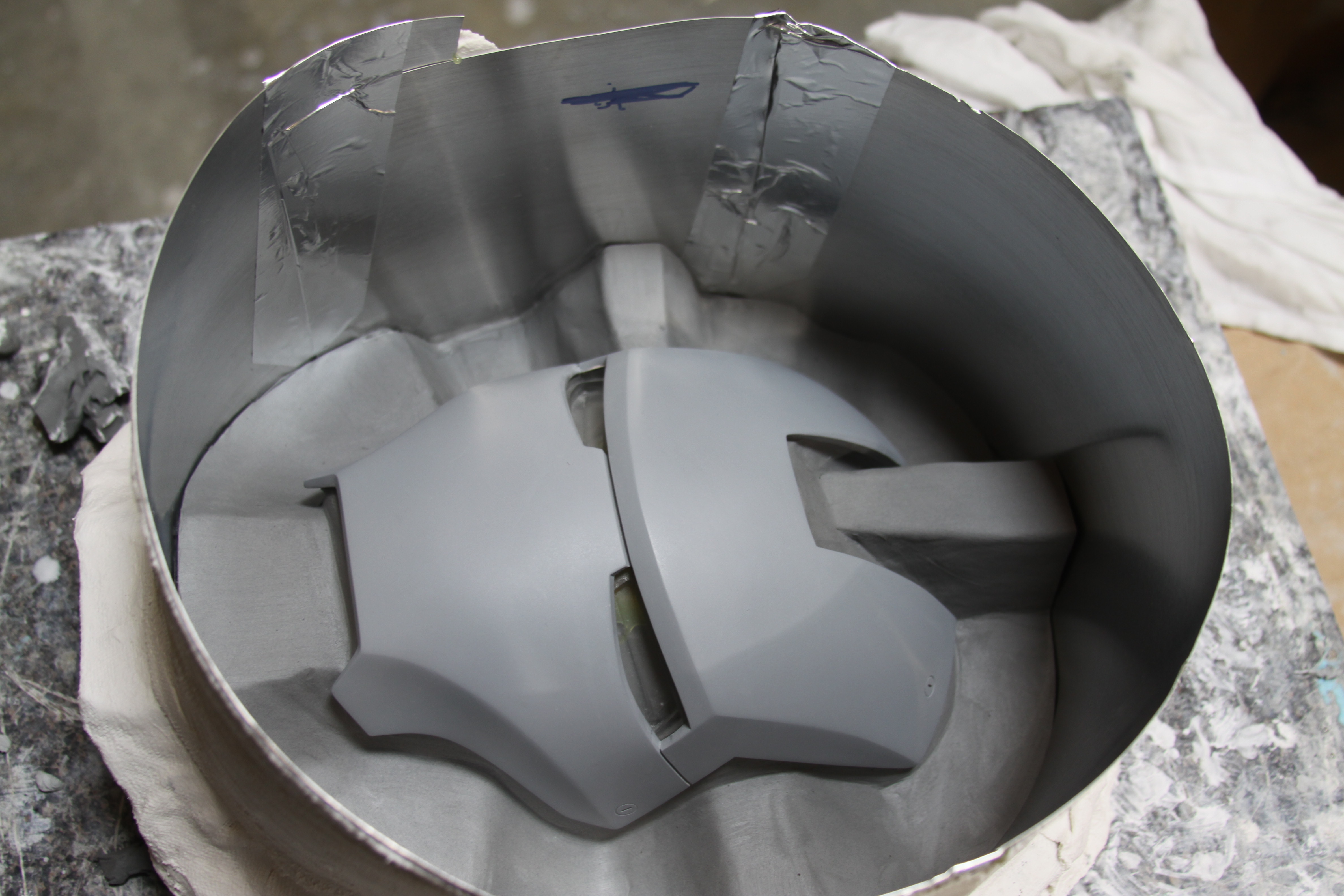
Moulds and Casts
Certain materials have different degrees of durability, flexibility, or elasticity that will work better for some things and less well for others. Casting materials also have varying amounts of much detail they will transfer. Prop builders have to be familiar with what modern materials will be the cheapest and most feasible for the job.
There are a ton of different ways to make a mold. The simplest method involves creating a sculpture and then pouring or brushing on a mold material. Clay is still the most common sculpting material, but most SFX houses order specialty brands that don't dry out and can hold fine detail. Quick-setting alginate, rubber, resin, and silicone molds are generally preferred by professionals over cheaper plaster, but these materials are expensive. Skin sensitive silicone is used for head and body casts. Vacuum forming can be used to produce hard plastic components. Silicones are flexibile and preserve a lot of fine details.
3D printing hasn't had a huge impact on the special effects manufacturing process due to the long printing time. Most printers have a low tolerance for transferring intricate details, and can't print out large scale objects. When 3D printing is used, it's generally only for a few pieces that still need finishing detail work from the props crew.
Legacy Effects Blog: Iron Man Suits

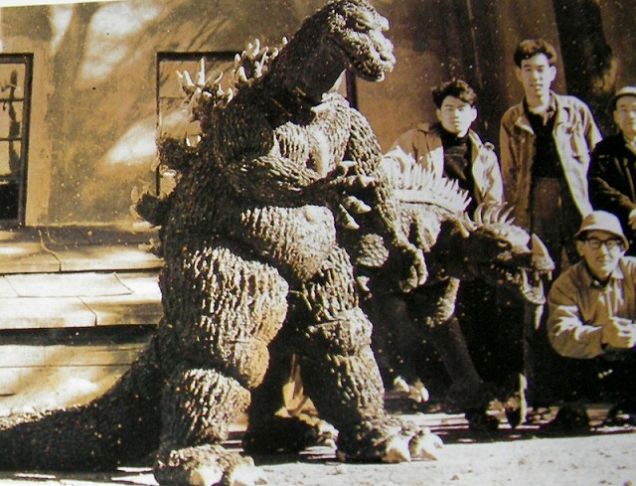
Monster Suits
Sometimes creatures in movies have to be CGI, since human proportions will not fit into a costume. When this is not the case, creature effects departments bring out the monster suit. A typical suit consists of an elastic skintight underlayer, a foam musculature layer, and an outer skin covered in silicone rubber. Actors are usually selected based on body build. Conditions within the suit are notoriously miserable. Suits are very heavy, uncomfortable, and hot. The crew has to make sure the actors get enough water so they don't get dehydrated. Masks make it difficult to breathe.
Unfortuately, foam and sillicone materials deteriorate and crumble apart over time, so many original classic monster costumes were not preserved and no longer exist.
Men in Suits - Performing through the Pain
Stan Winston School: Jurassic Park: Evolution of a Raptor Suit

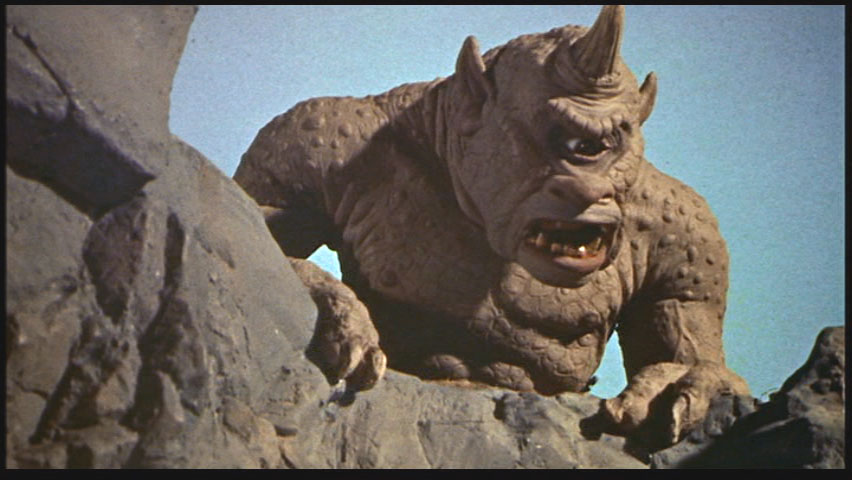
Stop-Motion
Stop-motion was once considered one of the most advanced forms of special effects in its day, but the technique is no longer used in live-action films today. Each puppet armature is constructed out of a custom-milled steel ball and socket skeleton. To make the armatures appear to scale with human actors, rear projection of the footage would be combined with the live-action footage.
Jason & the Argonauts - Special Effects
Big World Animators: Ray Harryhausen Interview
Ray Harryhausen at Work- Timelapse
The Ray Harryhausen Creature List

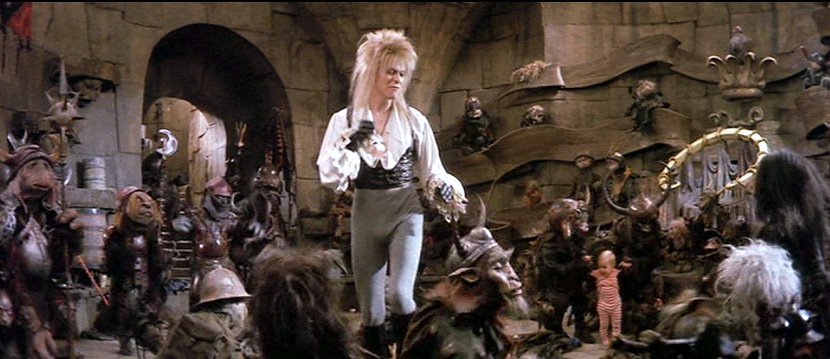
Puppetry
Jim Henson movies and kitschy monster B-movies enjoyed popularity because they were weird, imaginative, and quirky. People were willing to suspend disbelief because they didn't really care if the special effects looked handmade or a little cheesy. These types of movies are sadly becoming less common today as studios aim to appeal to a wide audience. Some people may prefer seeing old school practical effects, but audience demands and expectations have changed over time. Studio executives believe that people only want the best visual effects on screen, and CGI advances makes it hard to justify going back to simpler times when an expensive hand puppet was all that was needed to enthrall moviegoers.
In fairness, even the most complicated puppets have a more limited range of expression, movement, and scale than a rigged CG model. However, many special effects of the 1980's hold up 30 years later better than bad CGI of the last decade. Puppeteers managed to breath life and a certain charm into inanimate objects with their performances. In the hands of a skilled animator, CGI should be able to invoke the same emotional qualities, but it frequently fails to leave any impression. The complexity of CGI rigging controls may be a curse as much as it is a boon to digital artists. Hopefully in the future more directors will recognize that using puppetry doesn't necessarily compromise immersive storytelling. CGI and practical effects don't have to be incompatible.
CBC: Frank Oz Cookie Monster Interview
The Creators Project: Creating Cutting-Edge Sci-Fi with Analog Effects

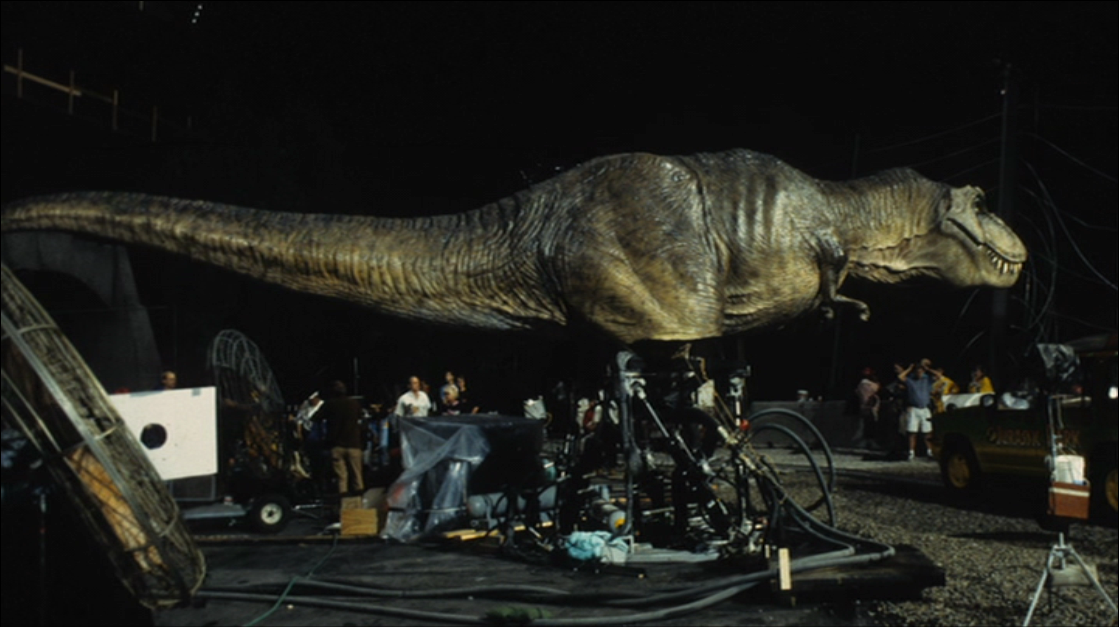
Animatronics
Robots are a step up from puppets and an actor crammed into a rubber monster suit, but they are also a lot more expensive. Animatronics are usually constructed for non-humanoid creatures that are too large, small, or oddly shaped for a human actor. The are operated using remote controls, wires, or cranes and power rigs depending on size. Typically the metal skeleton is covered with a cast latex or silicone skin to allow flexible movement.
Large animatronics are heavy and limited in their range of movement, especially walking. They are used for close up hero shots. A digital double is typically used for action scenes ad distant shots, but if the CGI and lighting are not well done the difference between models can be very distracting. Animatronics are used sparingly in modern blockbusters due to the cost.
Moments That Changed The Movies: Jurassic Park
Tested: The Robot Shark Technology of Jaws
Legacy Effects: JURASSIC WORLD: Building the Apatosaurus

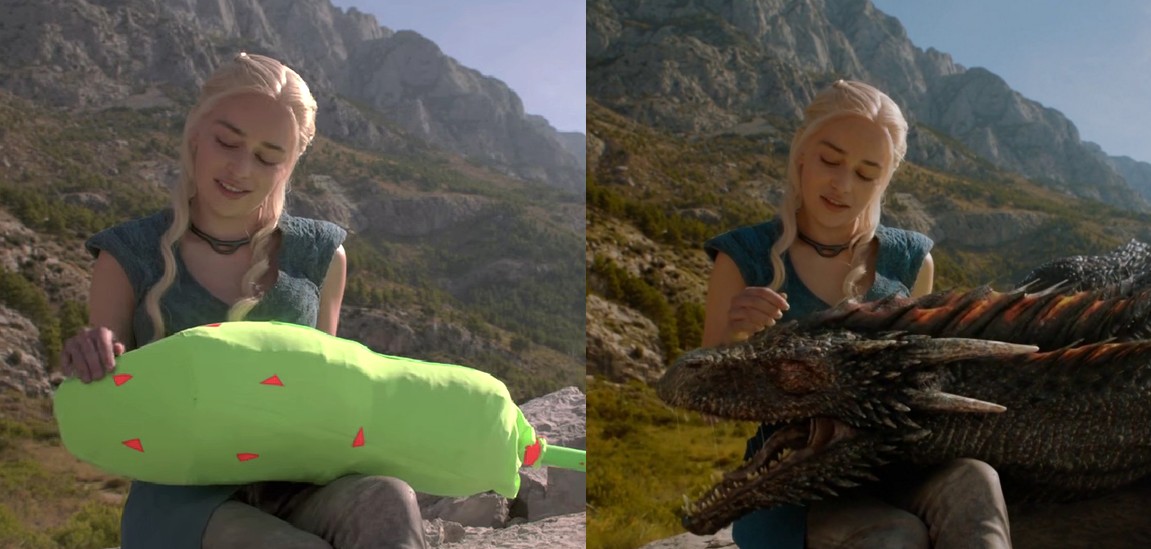
Studio Sub-Contracts
Most VFX studios are relatively small and independent from film studios. Many studios are started and owned by VFX industry veterans. This separation allows the VFX artists to specialize in their craft without having to deal with stiffling oversight from corporate commitees. However, VFX studios do not share in the revenue made at the box office, and the payment for each commission typically barely breaks even. Efforts to unionize or demand a more fair portion of earnings have been largely dismissed by all of the major entertainment companies.
A typical special effects studio operates on a commission-contract business model. On big budget productions the film company might hire several VFX studios to work on different projects, or a larger studio might sub-commission work from another specialty VFX house if they are extremely busy. VFX houses usually don't have difficulty finding work because there are lots of movies being made every year. The hours are still very long and deadlines are stressful.
Some VFX houses will score a contract with a television studio that tends to provide a relatively stable source of income over the course of several years. However, television budgets are a fraction of movie blockbusters, and they have shorter deadlines for seasons and episodes. Movies generally provide the most interesting challenges to work on. Commercials and custom orders are taken in on the side to cover expenses.

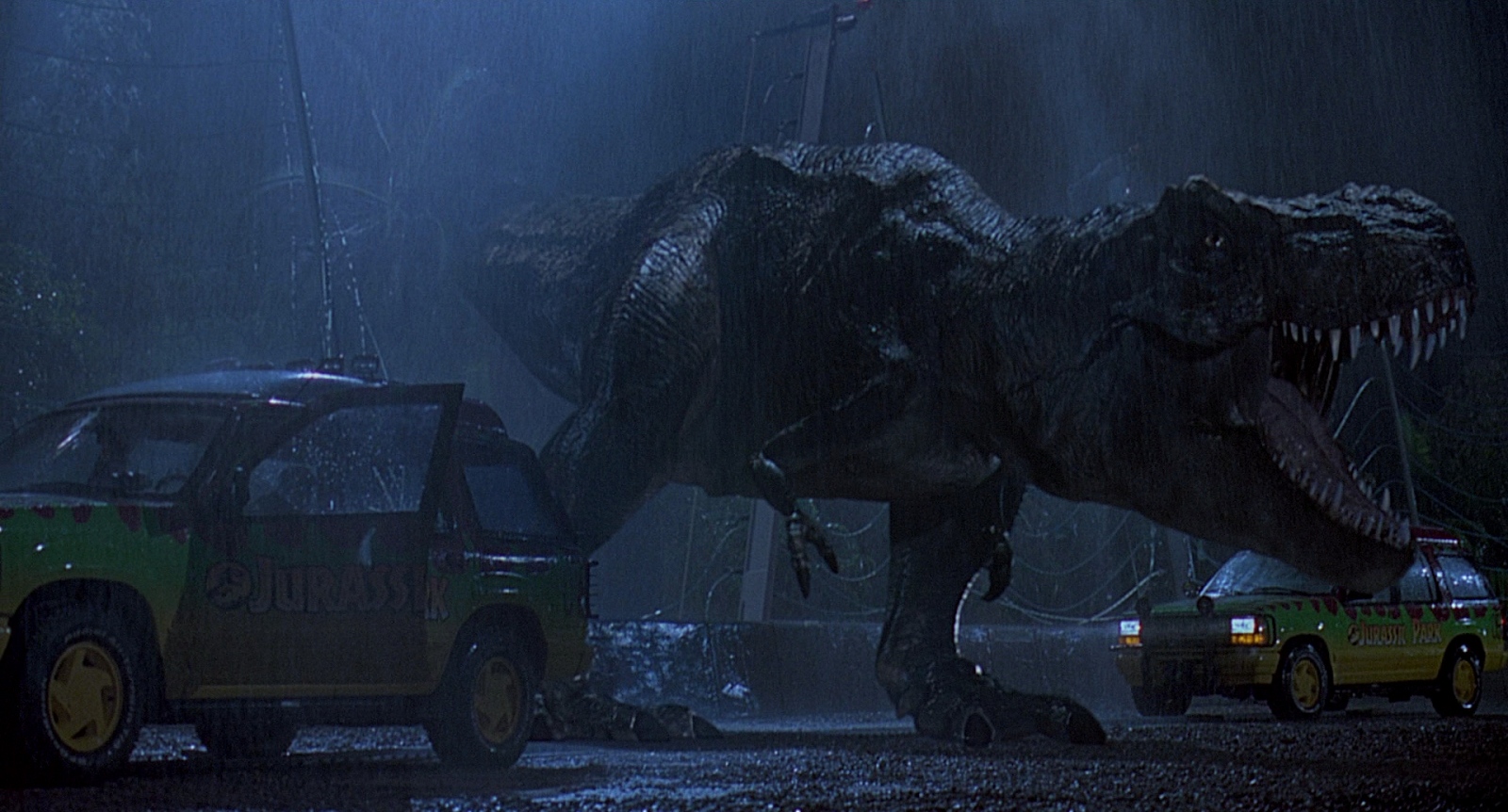
CGI
Computer graphics revolutionized special effects. It has enabled artists to create scenes that never would have been possible with real-world props, sets, or even the most advanced robotics. CGI offers the major advantage of being able to make quick adjustments over factors like scale and placement. CGI characters can be used to replace human actors in dangerous scenarios or to create fantastical worlds.
The biggest disadvantage of CGI is that it has a tendency to look glossy and fake when combined with live action scenes. The only way to correct this is through time-consuming texturing, compositing, and lighting. Animating physics correctly is also a challenge. CG artists work under tight deadlines, so oftentimes there isn't enough time to polish the results, and the animators just have to fake things as best as they can. Rapid action sequences, camera angles, and editing cuts are commonly used to disguise rushed animation.
CGI has proved to be a disruptive technology as much as it has proven to be an incredible tool for artists. Production budgets have skyrocketed to obscene levels due to the need for more advanced special effects, causing major economic instability in the industry when high risk projects underperform. Practical effects artists have had to struggle to adapt to new technology. Today artists spend longer hours working to meet rushed deadlines and put their own health and relationships second to producing the high quality details that often get taken for granted by society.
Despite hardships, SFX artists endure. They are constantly pushing the medium and finding new ways to achieve things that were once thought impossible. It should be interesting to see where digital special effects go in the future, especially when combined with good cinema and storytelling.
CG vs Practical Effects- RocketJump Film School
KaptainKristian: Jurassic Park - Pushing The Limits of Visual Effects
TechRadar: How Special Effects Transformed the Movies
ScreenRant: 8 Movies That Revolutionized Hollywood’s Visual Effects
BBC: Why filmmakers may return to old-school special effects

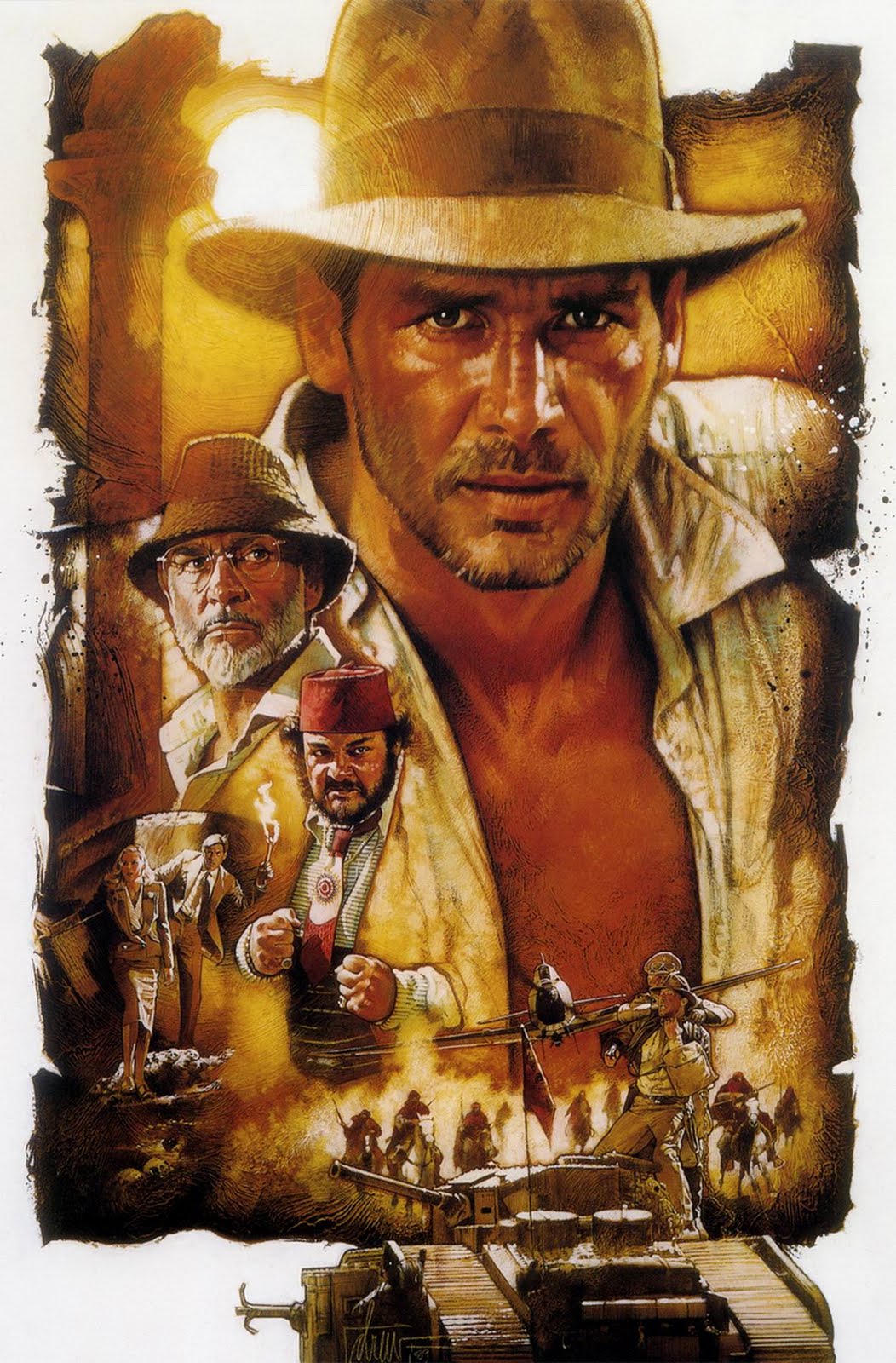
Movie Posters
In the past, poster designs would begin as a series of sketches that are tweaked with each iteration until the composition is just right. The sketch of choice is then transferred onto full-sized paper and details are painted by hand. This type of labor could take weeks or even months. Photoshop has made this method obsolete. It is faster to use a computer to cheaply produce not only a main banner poster, but also a whole campaign of extra variations of promotional advertisements.
A skilled digital designer can crop out actors and have them arranged in several different poster compositions before dinner time. The designs will be reworked according to the feedback of executives before being sent on to the marketing team. In less than a month the images will be mass produced across billboards, product packaging, posters, the internet, and screens around the world. A single run printing shop would never be able to manufacture that many custom print posters and distribute them in so short of a time period.
CGChannel: The Man behind the Legend: An Interview with Drew Struzan
The Huffington Post: Roger Kastel- The Man Who Drew Jaws
Cinematerial: Richard Amsel
Pinterest: Bob Peak
CreativeBloq: Iconic Movie Posters

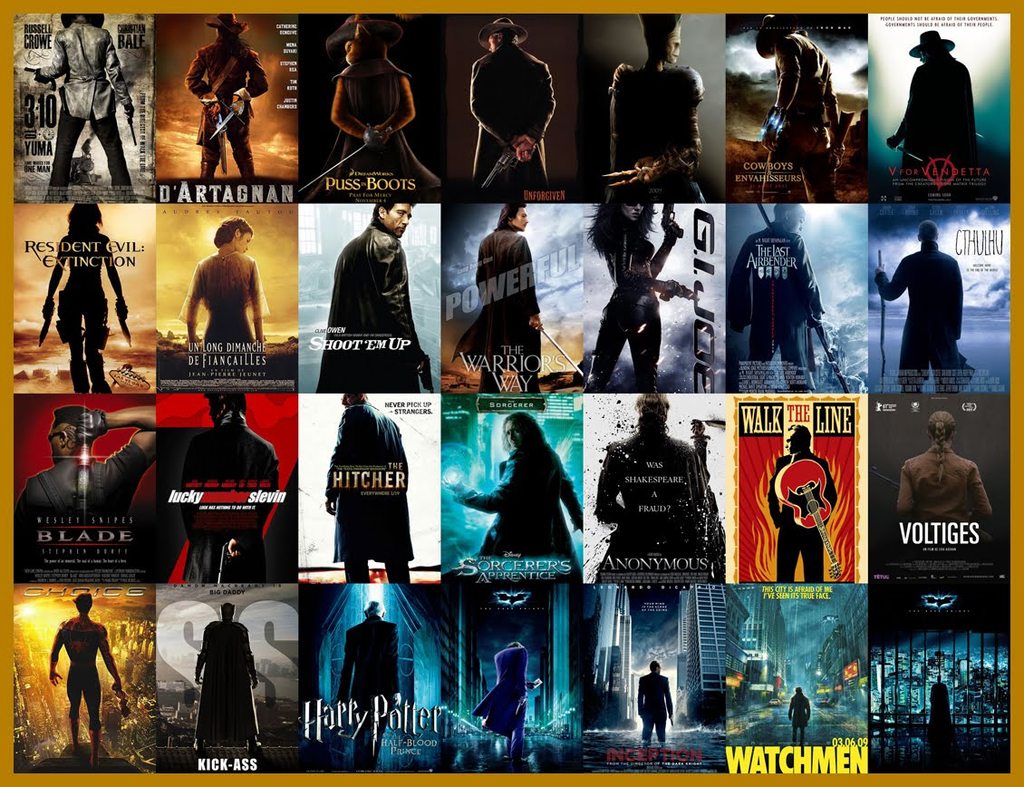
Modern Movie Posters
The extreme lengths businesses go to advertise a product months before the release date has cut down the amount of time designers can spend crafting a poster. CEOs don't have the incentive to extend deadlines just so the movie can have a nicer poster or work of art DVD cover; they just want lots of ads fast and for cheap. It shouldn't be surprising then that most advertising tend to be somewhat monotonous, uninspired, and shallow. Poster making has lost the special personal artistic touch that once made them so much more distinct and interesting.
This isn't to say modern designers are talentless, since there are still plenty of fresh and clever advertising campaigns. Unfortunately, the designers responsible tend to remain anonymous in a culture where corporate branding effaces individualism.
TV Tropes: Blue and Orange
SlashFilm: Best Movie Posters of 2015

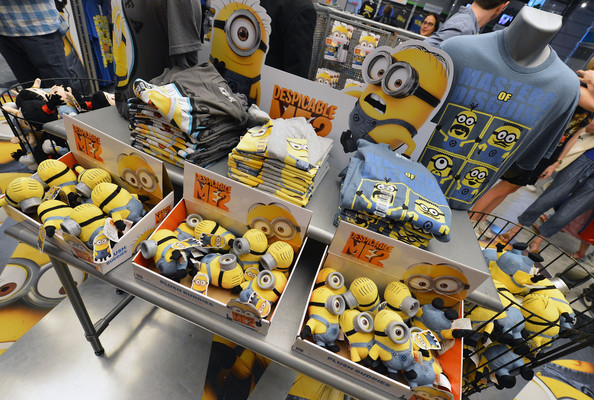
Merchandise
Special effects cost a lot of investment money, and the studio has to make all that money back with room for profit somehow. While DVD sales help bring in revenue over the long term, it's merchandise from popular franchises that generates a significant boost to total sales. Toys, collectibles, and anything associated with a desirable brand will typically sell, no matter how outrageous the product. Merchandise can sometimes be a risky expenditure for a studio. Most manufacturing wraps up before a movie hits theaters, which means a product line can't be cancelled if a movie looks like it will flop. Unpopular movies will have overstock left on shelves that has to be sold at bargain prices to offset losses.
Movie productions are stressful, but merchandise designers have an even shorter turnaround. Although manufacturing companies are contracted in advance, the manufacturing process can't actually start until designs have been finalized by the concept artists. A product has to be designed, manufactured, packaged and shipped to global retailers at least a month before the first release date. The majority of production takes place overseas to reduce labor and material costs, though some of the blueprinting may be managed by independent subcontracts.
Set and production pictures are immediately sent to graphic designers once they become available without much explanation or backstory. It's not the merchandise designer's prerogative to have access to need to know information unless it is relevant to the job. They are just hired to figure out how the directions they receive can be translated into products people will buy. Sending a request to the studio for clarification or more information might mean waiting a few weeks with no reply while the request is processed through several levels of classified clearance approval. Even project directors that have signed a Non-Disclosure Agreement can have trouble staying in the loop. Factory overseers tend to monitor assembly line workers closely to prevent leaked photos of products from spoiling a movie. Cell phones and cameras are generally banned inside the premises, with severe penalties for violation of the rules.
Avalanche Studios: Behind the Scenes of Disney Infinity 3.0 toy manufacturing
Tech Times: How Hot Toys Makes Ultra-Realistic Collectible Figures
imgur: Star Wars Revenue Infographic
Vox: #WheresRey
Toy of the Week // X-Men Legends Deadpool & Cable
Pokemon Card Trading Packs Assembly Line

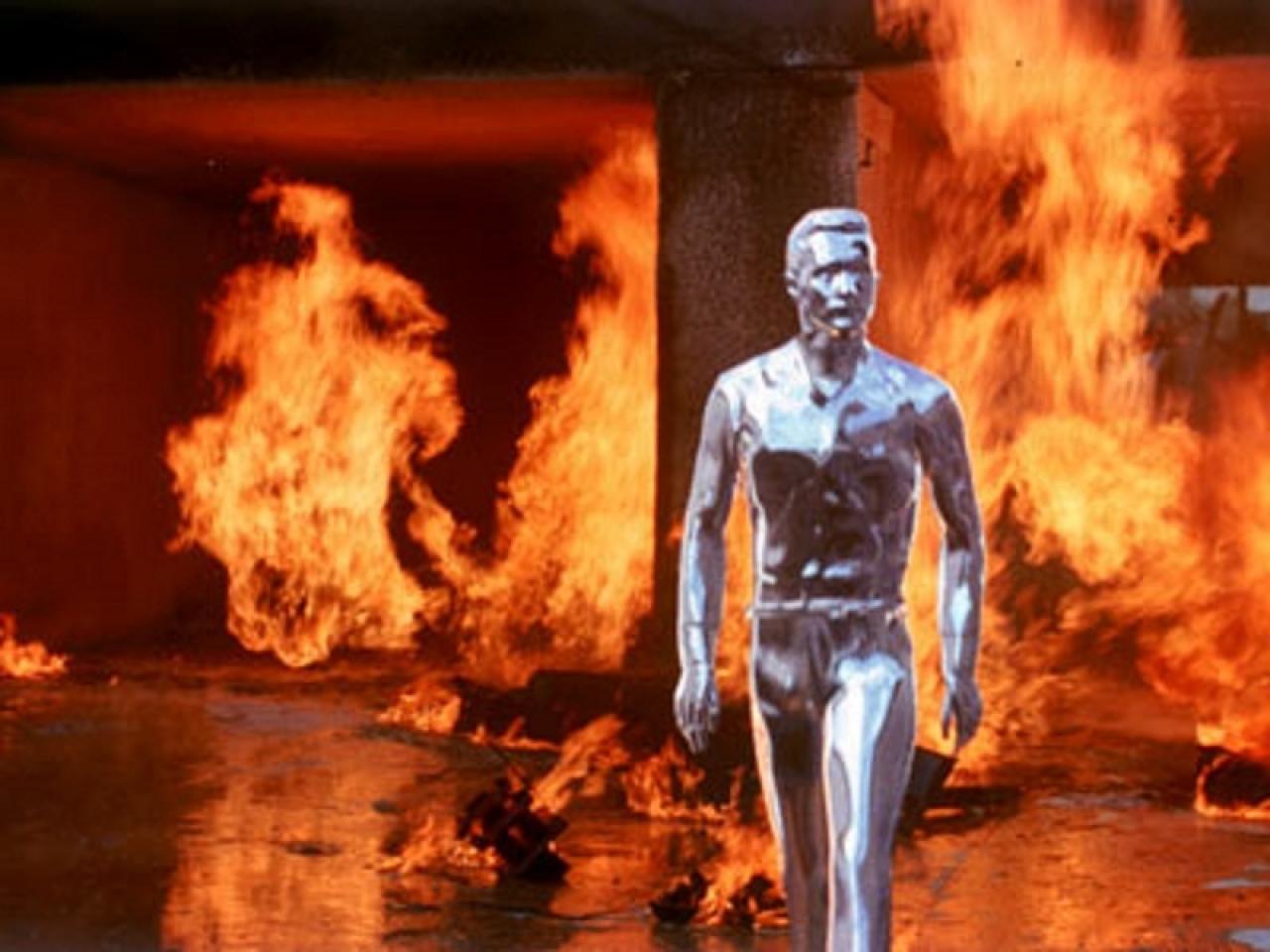
Advanced Tutorials- Hopefully Coming Soon
SFX
Production Design
Planning Complex Action Sequences
Stunt Doubles
Blanks
Workflow
The Design Process
Set Design

